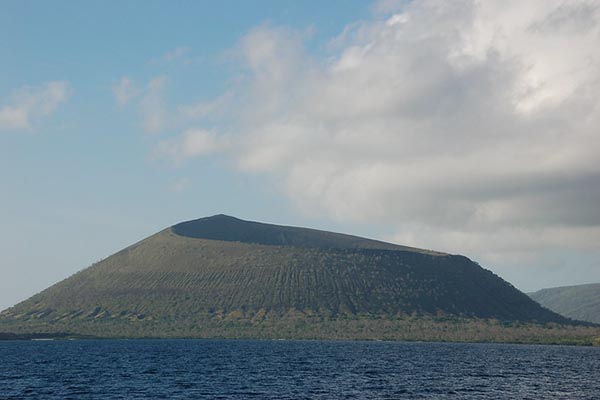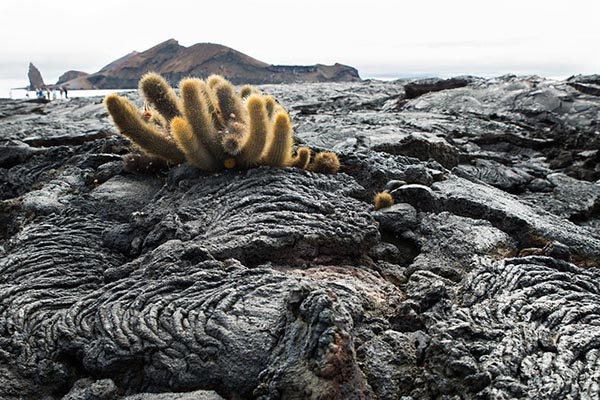- Talk with an expert insider!
- USA & Canada: 1-773-280-9571
- Ecuador: +593-987-004-404
- [email protected]

Volcanoes of the Galapagos Islands

Sea Currents in the Galapagos Islands
June 4, 2019
A 4-day trip to a Luxury Amazon Rainforest Lodge
June 12, 2019The Galapagos Islands lie on a volcanic hotspot, and as such, there is a considerable amount of volcanic activity here. That means there are several volcanoes in Galapagos, and many of these are active. The majority of the volcanoes that you might see are located in the western islands of the Galapagos, and specifically on Isabela Island. That said, you may find yourself snorkeling in volcanic craters at various points throughout the islands, and this can allow you to see a wide range of marine life. Here is our guide to the main volcanoes of the Galapagos Islands.
Main Volcanoes of the Galapagos Islands
The volcanoes of Galapagos Islands include the following:
Sierra Negra Volcano
The Sierra Negra volcano on Isabela Island hit the headlines in June 2018 when it began erupting, an event which continued over the summer months. It also erupted in 2005. This volcano is categorized as a shield volcano, and translated from Spanish, its name means “Black Mountain”. It is possible to take a four-hour walking tour to the volcano, when it is safe to do so (e.g. when it is not erupting). Depending on volcanic activity at the time of your visit, some areas might be off limits, and in which case the trip is adapted accordingly. The trail is mostly relatively easy, but there are muddy and rocky sections too, so good walking boots or shoes are very handy. The walk is relatively flat. It can rain at times, so it is important to bring rain gear with you.
There is a good chance of seeing Galapagos hawks, mockingbirds and Darwin finches at this Galapagos visitor site. The landscape is stunning and colorful, and this trip is well worth doing if you get the chance. What is more, Sierra Negra volcano is thought to have the second biggest crater in the world. Visits to the Sierra Negra volcano are sometimes part of Galapagos Islands cruise itineraries to the western islands (but not always, so be sure to check before booking!). It can also be visited on a day tour from Puerto Villamil if you are on a Galapagos land-based option.

Wolf Volcano
Wolf Volcano is the highest point within the Galapagos Islands, and it is also located on Isabela Island. The mountain reaches a peak of 5,600 feet (1,707 meters). It is also a shield volcano, and it is named after a German geologist of the 19th century. The volcano is active, and it last erupted in May 2015. Previous to this, it had not erupted for 33 years. One special thing about Wolf Volcano is that it has the pink land iguana inhabiting it, on the north and west sides. This species was only identified as being a new one in 2009, though it had been studied since 1986. While there is volcanic activity, it so far has not threatened this species, as the activity has been on the south and east sides. This is lucky, as Wolf Volcano is thought to be one of the most active volcanoes in the Galapagos Islands. Wolf Volcano also has its own unique subspecies of Galapagos tortoise. This creature has a saddleback shell and is also found on the north and western slopes. Wolf Volcano is not visited by tourists.
Alcedo Volcano
Alcedo Volcano is also located on Isabela Island, in the central area. It last erupted in 1993, and it is considered active. Galapagos volcanoes is part of the Galapagos hotspot. Alcedo Volcano is sometimes visited by tourists, but this is unusual, and it is very remote. In fact, it is so remote, that sometimes eruptions are not recorded until significantly after the event. For example, the 1993 eruption was not recorded until avisiting expedition went there and identified new craters in 1995. The wildlife at Alcedo Volcano includes a big population of giant tortoises. There are also a lot ofland iguanas at this site. However, there are now a lot of goats here, and this is threatening to the wildlife here.
Twin Craters
The twin craters are also known as “Los Gemelos” and they are located on Santa Cruz Island. While they are called craters, they are not, though they are still impressive. They were created as a result of magma domes. These domes became hard outside but were flowing inside, leading to an empty core that collapsed over time. This created stunning scenery that is often visited on a trip to the Santa Cruz Highlands to see giant tortoises. The landscape in this area is covered with forests. A visit here generally includes a walk on the rim, which allows the visitor to gain a sense of the size of the holes. Wildlife here to look out for includes the vermilion flycatcher. On the relatively easy walking here it is also possible to spot Darwin finches and Galapagos doves. If you are really lucky you might even see a short- eared owl. It is worth wearing walking shoes or boots to make the most of your visit. The craters are found on the road that runs between Baltra and Puerto Ayora.

Other volcanoes
Fernandina – Fernandina Island is itself a volcano. It is classified as a shield volcano and it last erupted in September 2017.
Cerro Azul – yet another shield volcano, Cerro Azul is found on Isabela Island towards the south western area of the island. It is very active, and it has had recent eruptions in 2005 and 2008. It reaches an altitude of 1,124 meters.
Insider Recommendations for Galapagos Volcanoes
Our main Insider recommendation for visits to Galapagos volcanoes, is to pay attention to what your guide tells you at all times. After all, if the volcano is active, the guidance they give you will be for your own safety.
If you are interested in visiting a Galapagos volcano on your trip to the Galapagos, then contact us to find out how we can help you. As Galapagos experts we are best placed to help you find the exact trip to suit your needs.





